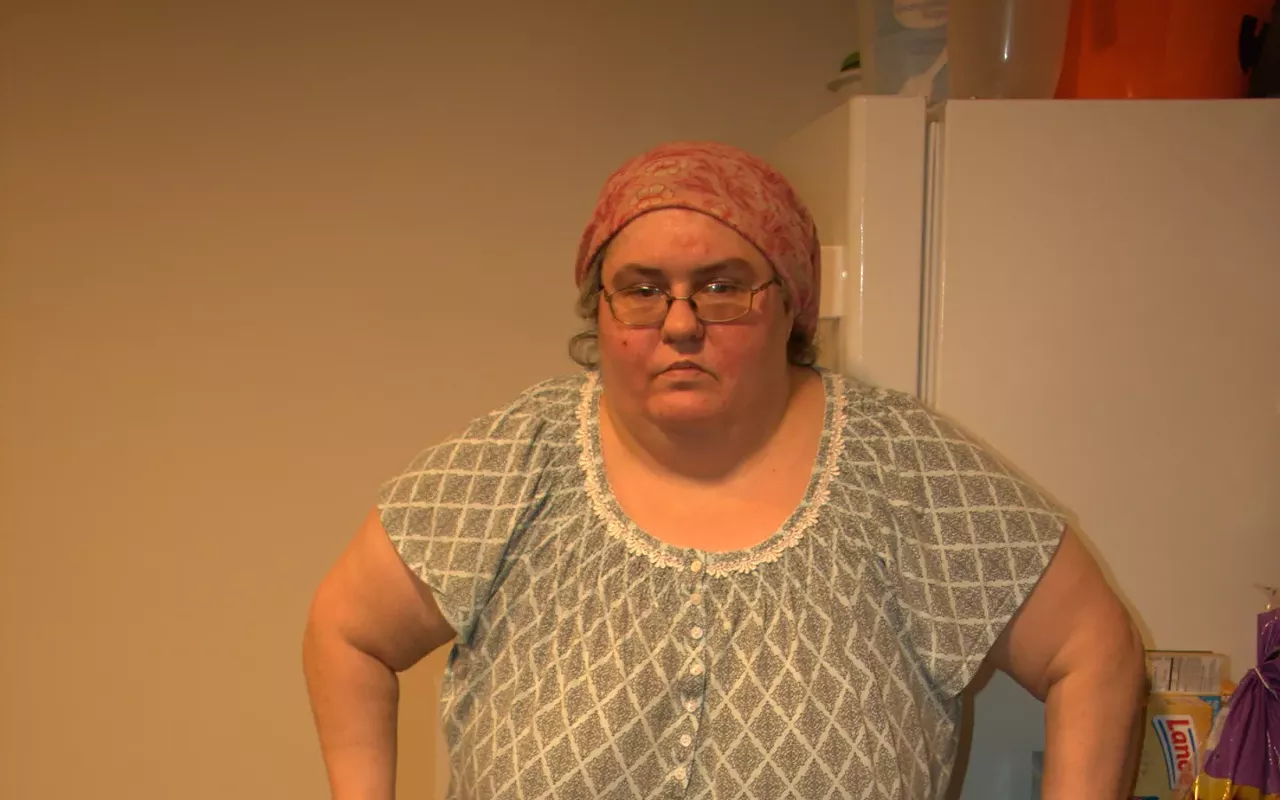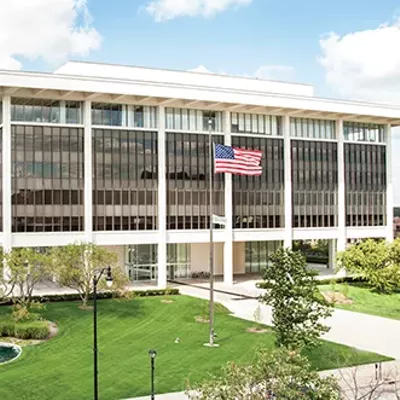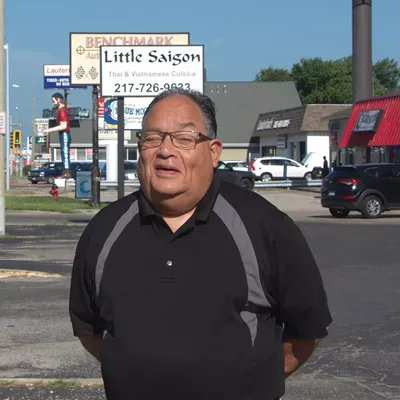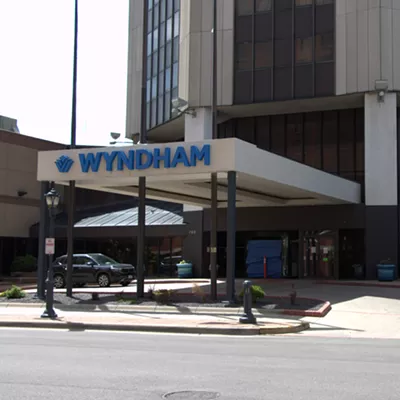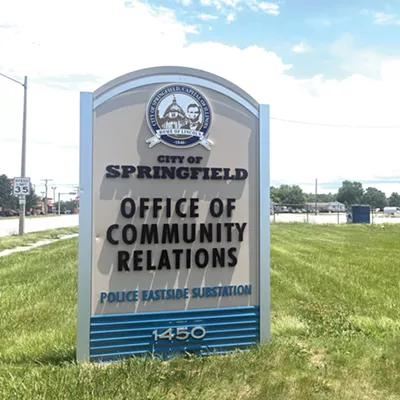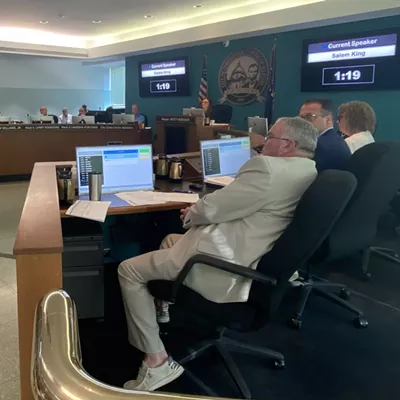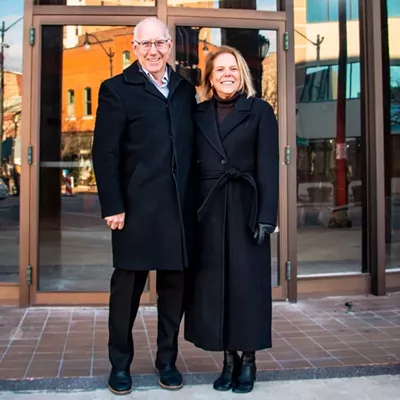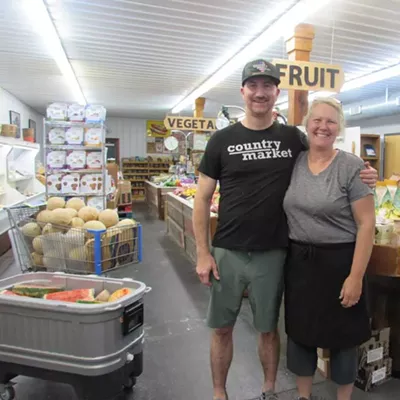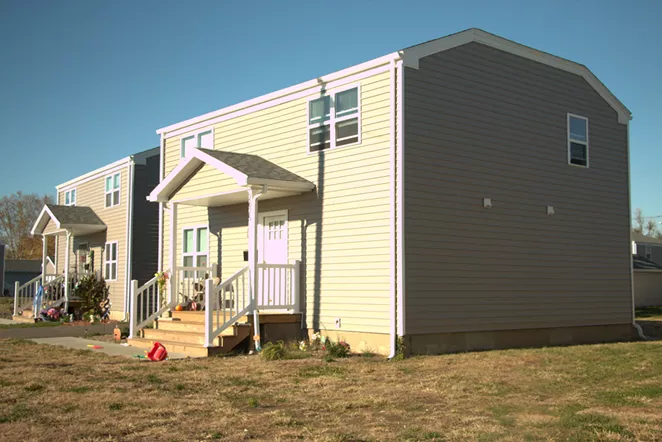
Tameika Thurman says she has enjoyed living in Poplar Place the past five months with her 11-year-old daughter and their dog, Coco.
“It’s peaceful. I don’t have any problems,” said Thurman, 27, a single mother and Lyft driver who was born and raised in Chicago and moved to Springfield a year ago.
The lack of crime that Thurman has noticed in Poplar Place, a 100-unit complex billed as an affordable family apartment community on Springfield’s east side, stands in contrast to the complex’s recent history.
Before a major renovation of the privately owned complex began in 2023, Springfield Economic and Development Commission member Sheila Stocks-Smith said Popular Place was known for years as a neglected “slum property” where “people have lived in very dire straits.”
Poplar Place was known as a high-crime area and was the site of several shootings and homicides in the 2010s and early 2020s. The neighborhood, originally constructed in 1950 and previously called Garden Court, consisted of 142 units and used to be stable and calm, according to Springfield Housing Authorty Executive Director Jackie Newman.
Related Midwest of Chicago, which has owned the complex since 1999, worked with a variety of partners to complete a $46.5 million redevelopment of the deteriorating complex. The work culminated this fall.
Tenants began moving in to the 50 single-family and 25 duplex homes a year ago, and the complex – for moderate- and low-income residents – is now 100% occupied, said Sarah Wick, Related Midwest’s senior vice president for affordable housing.
“The transformation of Poplar Place goes beyond building renovations,” she said. “We’ve preserved and improved vital housing that will serve Springfield families for generations to come.”
The redevelopment involved tearing down about 70 buildings and renovating 75 buildings at the 50-acre site along Old Rochester Road, near South Grand Avenue. The management office was moved to the center of the site and next to a “green lawn” area that includes a playground, 2.5 acres of park land and a community center.
Total construction costs were around $26 million, with approximately $20 million of the remaining project costs representing architectural fees, environmental studies, building permits, tenant relocation, financing costs and legal expenses, as well as funds to leverage state tax credits and encourage private investment in the redevelopment.
The average construction cost for each unit was about $260,000.
The project was a collaboration between Related, Springfield city government, the SHA and the Illinois Housing Development Authority. Financing and other financial support for the project also involved Heartland Bank and Trust Co., Red Stone Partners, CVS Health and Aetna Better Health of Illinois.
The Springfield City Council, under former mayor Jim Langfelder, agreed to support the project with $1 million in property taxes from an east side tax-increment financing district and an additional $1.2 million in TIF funding specifically for road improvements.
Roads throughout the complex previously were owned by Related. As part of the redevelopment, the roads were repaved and now are owned and maintained by the city.
As part of a project labor agreement mandating minority participation, 31% of people who worked on the project were non-white, Wick said. Almost 50% of workers on the project, conducted by union contractors, were Springfield residents, and 15% of the contractors were minority-owned or female-owned companies, she said.
Wick added that $10.3 million of the project cost was spent with Springfield businesses.
Part of Related’s financing came from more than $8 million in money appropriated to IHDA from the federal American Rescue Plan of 2021.
To qualify for Poplar Place, prospective tenants must be at or below 60% of the area’s median household income. Twenty-five percent of the units are set aside for SHA’s voucher program for low-income families. For units not part of the voucher program, rents for the two- to four-bedroom apartments range from $800 to $925 per month.
Ward 3 Ald. Roy Williams, who spoke Oct. 23 at a grand reopening and ribbon-cutting ceremony for Poplar Place, said most residents are happy with their new units. Williams had been frustrated by years of delays in renovating the subdivision.
He said he remains frustrated that the installation of sidewalks along Old Rochester Road wasn’t included in the project by the city or the developer. Putting the new entrance to Poplar Place along the two-lane road has meant residents have been walking in the middle of the road to get to stores and businesses a few blocks away.
“If someone gets hit, I’m going to blame the city engineers,” Williams told Illinois Times.
Nate Bottom, the city’s chief engineer, said city officials are researching a potential sidewalk along Old Rochester. Installing a basic sidewalk along 2,000 feet of Old Rochester near Poplar Place would cost $100,000, he said.
The City Council needs to decide where to spend the $1 million it typically devotes to sidewalk improvements each year, Bottom said.
State Sen. Doris Turner, D-Springfield, a former member of the City Council and Sangamon County Board, lives a few blocks from Poplar Place. She said at the Oct. 23 ceremony: “We are witnessing in real time a resurgence, a rebirth, of this community. This is going to mean so much, not just to Poplar Place, but to the surrounding neighborhood.”
Val Yazell, Mayor Misty Buscher’s director of the Office of Planning and Economic Development, said at the ceremony, “We stand at the threshold of a new era for this neighborhood. It’s not just about the bricks and mortar, but to me it represents the homes for our community to live in and to thrive.”
Newman said the SHA and the authority’s Capital City Coalition are “happy that we have people living within our community that are concerned that our families live in quality, affordable housing.”
Rushil Desai, chief executive officer of Aetna Better Health of Illinois, which invested $16 million in the project, said Aetna and CVS “recognize that equitable access to quality, safe and affordable housing is one of the biggest barriers to achieving good health, especially for families.”
“Housing stability and affordability are key drivers in health outcomes” and allow families to “better prioritize their health,” Desai said.

